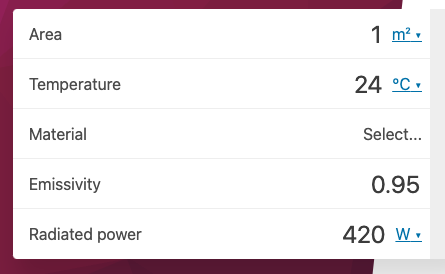I got an infrared thermometer (SOVACARTE HS980E) recently and have been playing around with it.
My understanding is that it works by measuring the amount of infrared radiation coming off of the object, in terms of W per $m^2$, and then basically using the Stefen-Boltzmann law to determine what its temperature should be. It has an "emissivity" setting which defaults to 0.95 .
Further from what I understand, aluminum foil has a very low emissivity (0.03), so aluminum foil of the same temperature as a 'normal' object (e.g. of emissivity 0.95) should emit far less infrared radiation:
[source]
Thus I expected that when I measured the foil with the same settings as I do other objects in the room, the foil would register as far colder because it is emitting less infrared radiation. But the measurement is the same! I measured the following:
- Top of drawers: 23°C-24°C
- Aluminum foil: 23°-25°C
- Ice cream fresh out the freezer (to verify it's working): -10°C to -9°C
Since the IR thermometer doesn't know what it's looking at, the only conclusion I can draw is that the aluminum foil is emitting just as much infrared as any other object at room temperature in the room. Is that correct, and if so why is that? And if not, what explains the readings?


